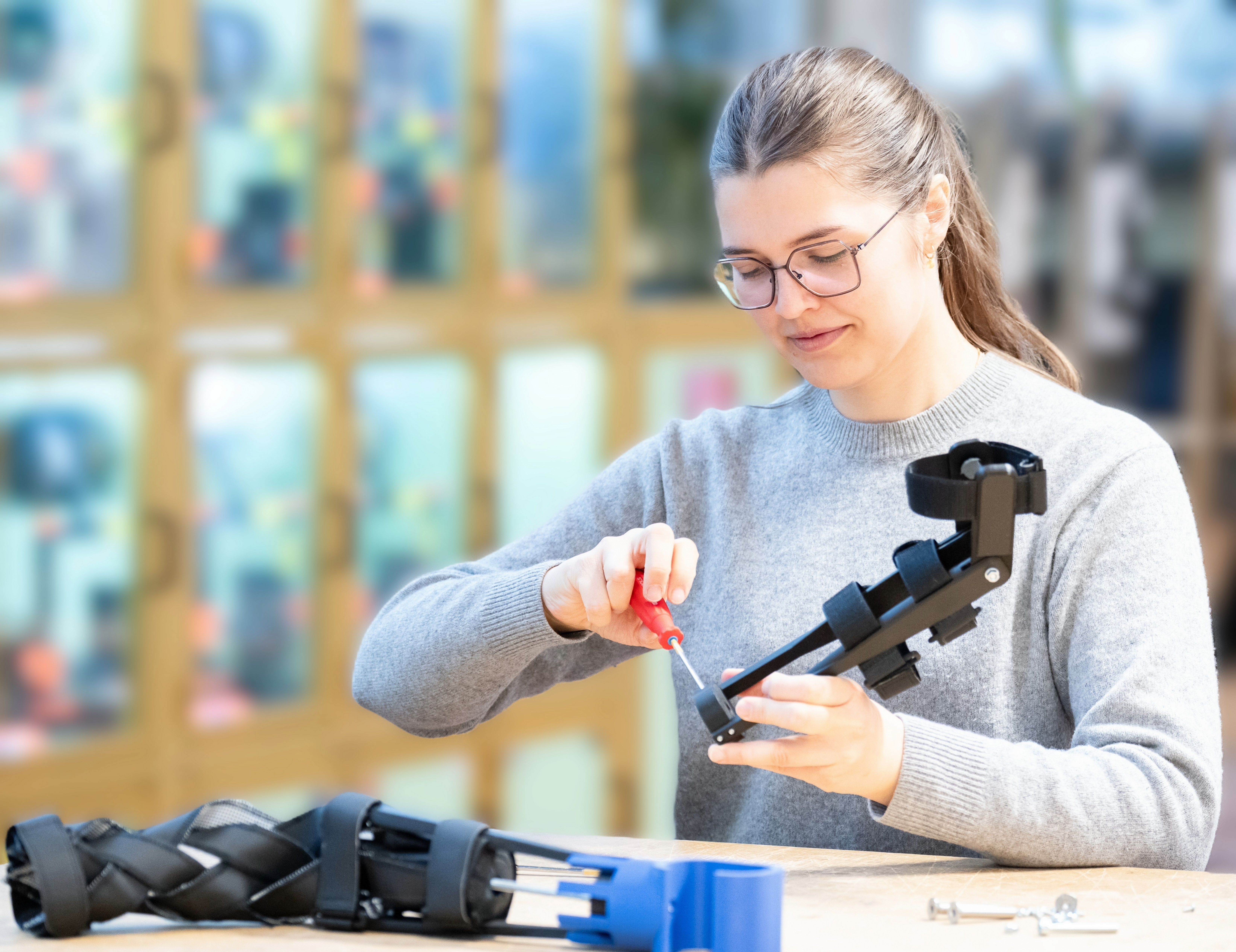Was es macht
Globally, millions of people with upper limb differences remain underserved by prosthetics due to discomfort, cost, and limited access. Softletics reimagines the socket as a modular, adaptive system—engineered for active use and built to restore independence.
Deine Inspiration
It all started with my Master’s thesis and a determined teenager born without her left hand. Her goal: to finally take part in the sports she loved—rowing, cycling, and climbing—with full control and without pain. These sports share a common mechanical challenge: they require a strong, reliable grip under constant tension. Existing prosthetic sockets couldn’t meet this demand—they slipped, pressed painfully, or lacked the flexibility needed for real movement. The answer emerged not from complexity, but from an elegant, self-tightening principle found in a centuries-old toy: the Chinese finger trap.
So funktioniert es
Softletics is a modular prosthetic socket that users can fit and adjust on their own—no prosthetist required. It consists of one textile part and six stock-sized, 3D-printed parts. Users measure their residual limb at home using a simple guide, and the algorithm selects the best-fitting combination, which is then pre-assembled and shipped. At its core is a patent-pending mechanical system inspired by the Chinese finger trap: the more tension applied, the tighter the grip. This allows users to adapt the fit throughout the day — compensating for swelling, muscle use, or activity. It even accommodates small anatomical changes during growth, making it suitable for children. The design is lightweight, breathable, and secure enough for high-impact sports like rowing, climbing, or cycling. Compared to traditional sockets, Softletics is affordable, breathable, and eliminates the need for clinic visits — bringing high-quality prosthetic care to users around the world.
Designprozess
Softletics began with a clear focus: solving the pain point where most prosthetics fail—tension resistance. The goal was a socket that tightens under load but remains comfortable at rest. This led to the core concept: converting translational into transradial force, inspired by the Chinese finger trap. To test the principle, a large paper prototype was built to simulate the mechanism under real tension. After confirming the self-tightening effect, additional prosthetic features were added—pressure rods to allow push-ups and a simple hand attachment. Once the mechanics worked, the design evolved for comfort and functionality. The paper structure was replaced with textiles, and wooden rods with streamlined, 3D-printed components. Hand attachments were adapted for use with dumbbells, bike grips, and gym equipment. Over 10 functional prototypes were developed through CAD modeling, textile iteration, and mechanical testing. Real-life feedback came from sports users training in fitness environments, helping refine stability and wearability. Now, Softletics is ready—for sports, strength, and independence.
Warum es anders ist
Softletics challenges the norms of prosthetic design by focusing on adaptability, independence, and everyday performance. While traditional sockets are rigid, clinic-dependent, and costly, Softletics is modular, breathable, and fully self-adjustable by the user — no appointments, no waiting. It’s optimized for dynamic movement and sports, yet flexible enough to grow with a child’s body. The standardized design enables consistent quality without custom molding, while the digital sizing process simplifies access. By removing barriers of cost, expertise, and discomfort, Softletics redefines what prosthetic sockets can be: intuitive, empowering, and made for everyday life.
Pläne für die Zukunft
The next step is to bring Softletics to market and make it accessible to as many people with upper limb differences as possible. As a medical product, I am working toward CE certification through mechanical testing and regulatory documentation. In parallel, I am expanding user trials and building production capacity. Softletics will launch through an online direct-to-consumer model in high-income countries, while NGO partnerships will help reach users in low- and middle-income regions. The goal is to offer a reliable, affordable alternative in prosthetic care—across borders and activity levels.
Auszeichnungen
National winner and international finalist of Red Bull Basement; 1st place at the SDG Pitch Competition at ETH Zurich; 2nd place at ThinkSport Challenge (AI & Robotics)



Share this page on